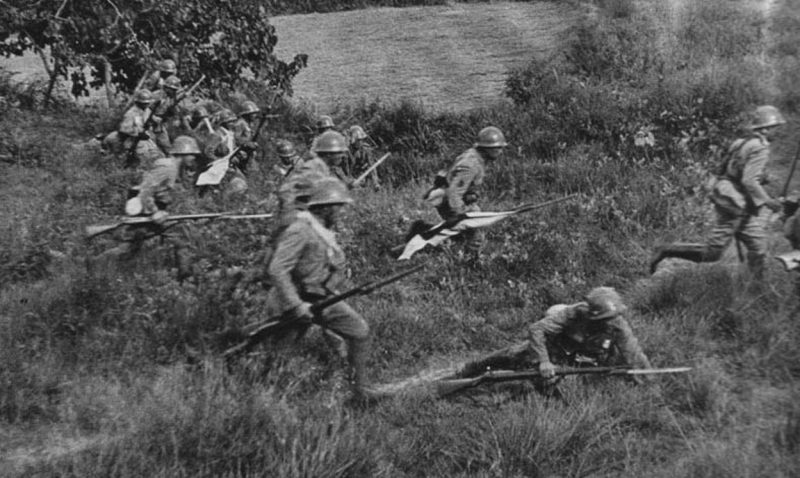On April 6th, 1945, nearing the end World War II, Japanese forces launched a massive air counter-offensive against the insurgent American military on their own island of Okinawa. More than 800 aircraft, among them about 300–350 suicidal kamikaze flyers, attacked American ground and naval forces during this phase of what historians have called The Battle of Okinawa. About half of the total aircraft were shot down.
The Battle of Okinawa began on April 1, when a reported 287,000 American soldiers stormed the small island located about 640 kilometers from Kyushu, Japan. The operation’s goal was to capture Japan’s strategically placed airfields on Okinawa.
After meeting little resistance on the beaches the Americans could not believe their luck. Unlike previous landings, they were not attacked by small arms fire and mortar fire. However, it was a new Japanese tactic. The Japanese forces waited until the Americans advanced and they ambushed them. Many American marines were killed and wounded in the sustained fire.
Despite this and with the support of Navy battleship shelling- the Americans were able to press ahead.
The America advance on the island was slow. They pushed back the Japanese day after day and night after night. the Japanese had formed an extensive network of bunkers and defensive positions around the island and they all had to be taken by the Americans. The fighting was slow and brutal.
On the night of April 6th, the Japanese decided to take a gamble and launch a night attack on the Americans in order to push the Americans back. The Japanese High Command wanted the forces on the island to hold it for as long as possible. this was because they feared that the Americans would use the airfields to launch air raids on mainland Japan.
The Japanese launched a massive banzai charge, led by their officers, waving their samurai swords. the fighting was fierce and there was hand-to-hand fighting. The night of the 6th saw some of the fiercest fighting of the war in the Pacific.
The American marines proved victorious thanks to their superior firepower and greater numbers. The counterattack by the Japanese had failed and this meant that the Battle of Okinawa was effectively over. The Americans were engaged in a mopping-up operation for several more days, as the Japanese forces in the island were determined to fight to the last.
The campaign lasted until June 22. The death toll included 14,000 American soldiers, 77,000 Japanese soldiers, and almost 100,000 Okinawan civilians. The battle ended little more than six weeks before America dropped the atomic bomb on Hiroshima, August 6th, 1945.
